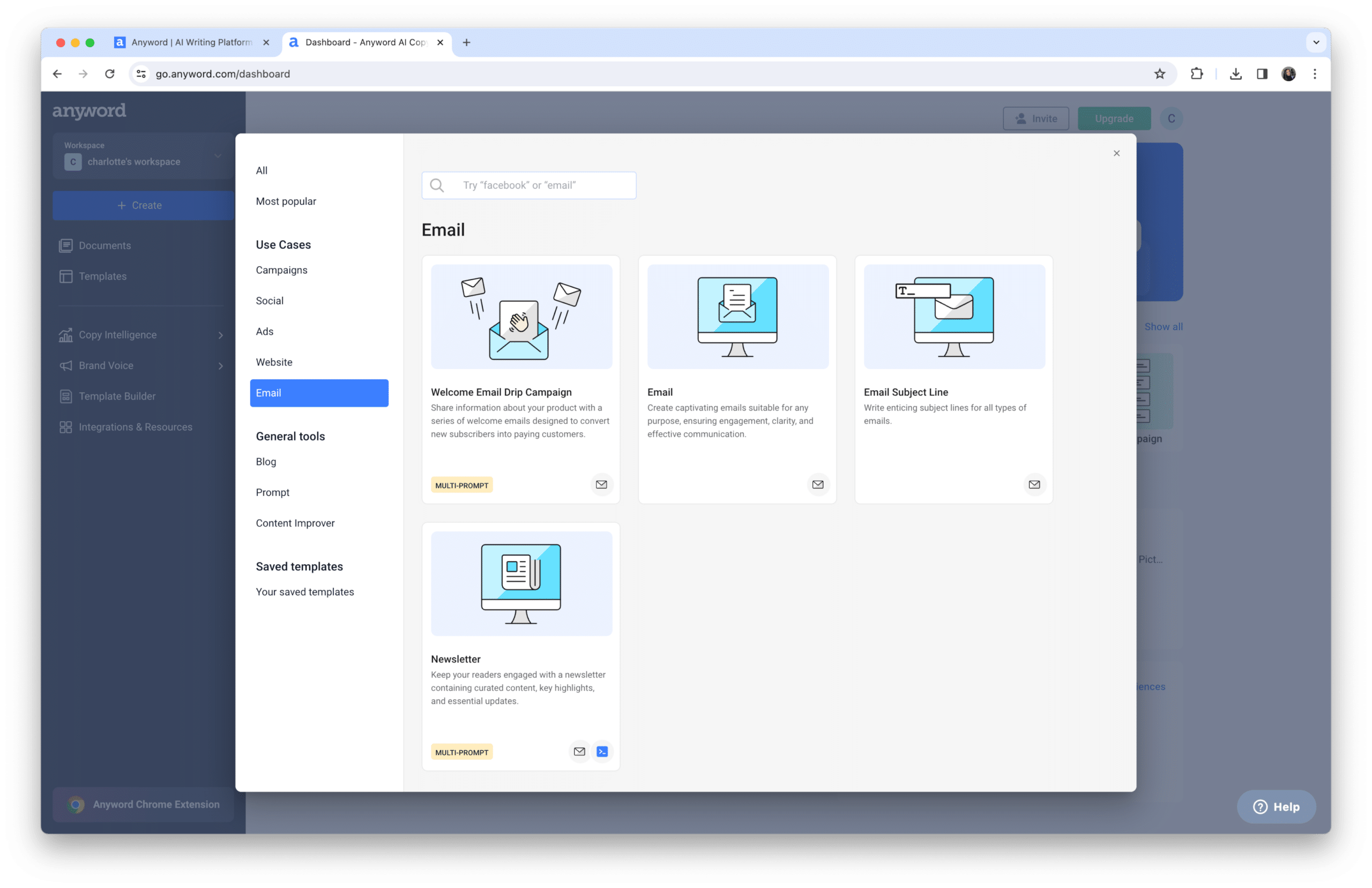Anyword: Complete Buyer's Guide
Data-driven AI copy generation platform
Anyword positions itself as a data-driven AI copy generation platform specifically designed for mid-market ecommerce businesses seeking predictive performance optimization. Unlike basic content generation tools, Anyword's core differentiator lies in its Predictive Performance Score system, which analyzes content against industry-specific A/B test datasets to forecast engagement metrics before publication[42][44].
Market Position & Maturity
Market Standing
Anyword occupies a strategic mid-market position between commodity AI writing tools and enterprise-scale solutions, serving businesses that need data-driven optimization without enterprise-level complexity or timelines[42][44].
Industry Recognition
Industry recognition patterns align with broader market trends showing 270% adoption surge since 2019, with over 50% of e-commerce businesses now leveraging AI technologies[7].
Strategic Partnerships
Strategic partnerships and ecosystem positioning include native integrations with major ecommerce platforms like Shopify, WordPress, and HubSpot, indicating established relationships within the ecommerce technology stack[40].
Longevity Assessment
Long-term viability assessment benefits from the platform's focus on predictive analytics, which creates defensible differentiation as the market matures. The 2-4 week deployment timeline positions Anyword competitively between rapid-deployment solutions and complex enterprise implementations, suggesting sustainable market positioning[28].
Proof of Capabilities
Customer Evidence
Restaurant Supply Store's implementation demonstrates Anyword's capability to handle large-scale content generation challenges. The company needed 300,000-400,000 product descriptions with only 4-5 writers, achieving 10x content output with 15 million words generated through AI-powered solutions[13][52].
Quantified Outcomes
Performance validation across customer implementations shows 30% average conversion rate increases across marketing channels, with operational efficiency gains reducing content creation time from 4 hours to 5 minutes per product[40][43][52][58].
Market Validation
Market adoption indicators show the platform serves the 40% of retailers now leveraging generative AI for content creation, positioning within the broader trend of 270% adoption surge since 2019[7][38].
AI Technology
Anyword's AI foundation centers on its proprietary Predictive Performance Score system, which differentiates it from basic content generation platforms. The technology analyzes copy against historical A/B test datasets to forecast engagement metrics, enabling data-driven optimization before content publication[42][44].
Architecture
The platform's Content Intelligence architecture enforces brand voice consistency through messaging frameworks and terminology management across thousands of SKUs[42].
Primary Competitors
Primary competitors include Writesonic for SEO-optimized descriptions, Copy.ai for template-based short-form content, and Copysmith for bulk generation capabilities[29][52].
Competitive Advantages
Competitive advantages center on the Predictive Performance Score system, which analyzes content against industry-specific A/B test datasets to forecast engagement metrics before publication[42][44].
Market Positioning
Market positioning strategy targets businesses that have outgrown basic AI writing tools but don't require enterprise-scale complexity, serving the gap between commodity solutions and sophisticated enterprise platforms.
Win/Loss Scenarios
Win scenarios favor Anyword when predictive performance analytics, brand voice consistency, and mid-market deployment timelines align with organizational needs. Loss scenarios occur when businesses prioritize rapid deployment (Shopify Magic), basic SEO optimization (Writesonic), or enterprise-scale personalization (Persado)[28][33][42][53].
Key Features

Pros & Cons
Use Cases
Integrations
Featured In Articles
Comprehensive analysis of Copy Generation for Ecommerce for Ecommerce businesses and online retailers. Expert evaluation of features, pricing, and implementation.
How We Researched This Guide
About This Guide: This comprehensive analysis is based on extensive competitive intelligence and real-world implementation data from leading AI vendors. StayModern updates this guide quarterly to reflect market developments and vendor performance changes.
59+ verified sources per analysis including official documentation, customer reviews, analyst reports, and industry publications.
- • Vendor documentation & whitepapers
- • Customer testimonials & case studies
- • Third-party analyst assessments
- • Industry benchmarking reports
Standardized assessment framework across 8 key dimensions for objective comparison.
- • Technology capabilities & architecture
- • Market position & customer evidence
- • Implementation experience & support
- • Pricing value & competitive position
Research is refreshed every 90 days to capture market changes and new vendor capabilities.
- • New product releases & features
- • Market positioning changes
- • Customer feedback integration
- • Competitive landscape shifts
Every claim is source-linked with direct citations to original materials for verification.
- • Clickable citation links
- • Original source attribution
- • Date stamps for currency
- • Quality score validation
Analysis follows systematic research protocols with consistent evaluation frameworks.
- • Standardized assessment criteria
- • Multi-source verification process
- • Consistent evaluation methodology
- • Quality assurance protocols
Buyer-focused analysis with transparent methodology and factual accuracy commitment.
- • Objective comparative analysis
- • Transparent research methodology
- • Factual accuracy commitment
- • Continuous quality improvement
Quality Commitment: If you find any inaccuracies in our analysis on this page, please contact us at research@staymodern.ai. We're committed to maintaining the highest standards of research integrity and will investigate and correct any issues promptly.